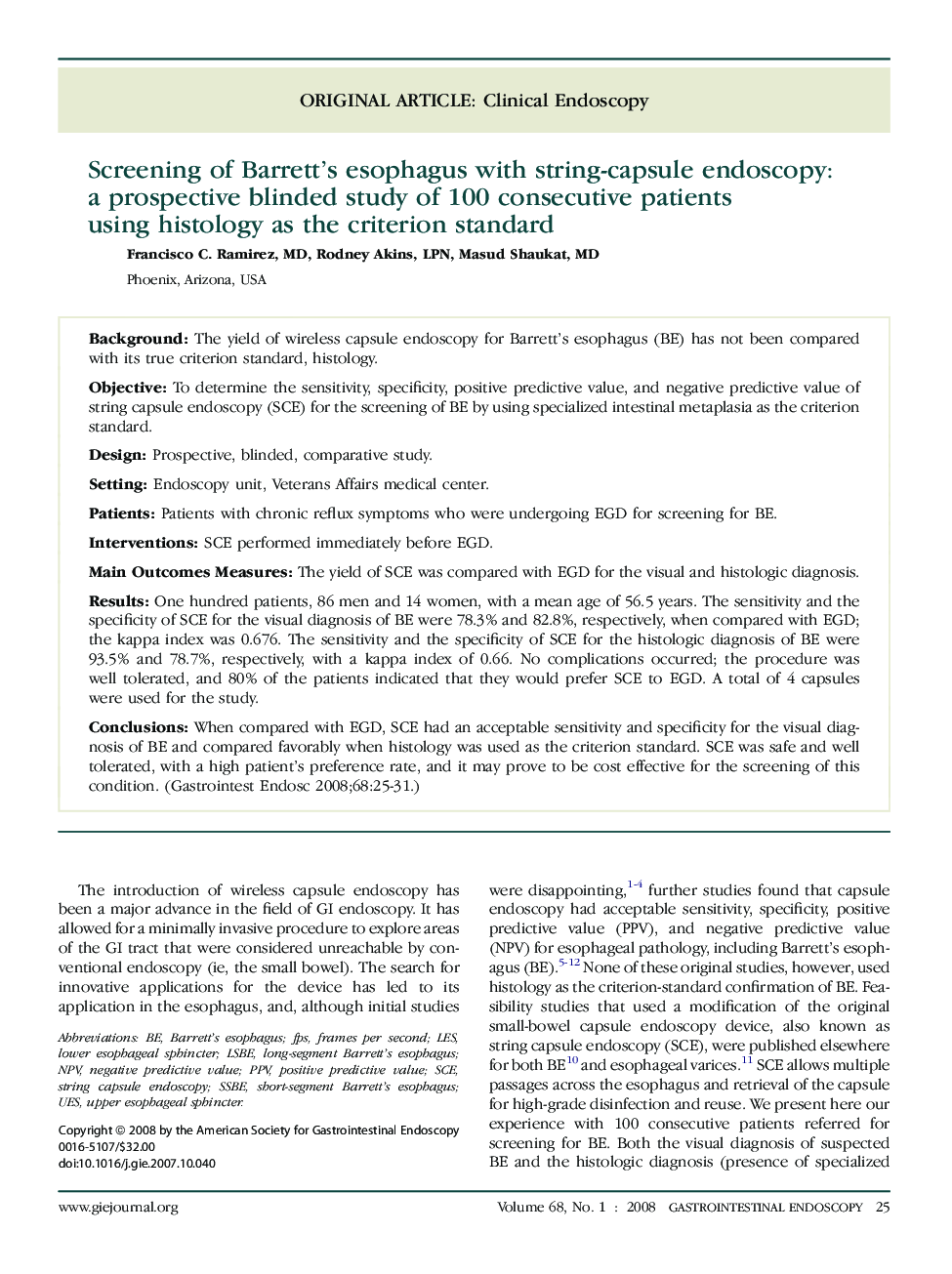| Article ID | Journal | Published Year | Pages | File Type |
|---|---|---|---|---|
| 3307440 | Gastrointestinal Endoscopy | 2008 | 7 Pages |
BackgroundThe yield of wireless capsule endoscopy for Barrett's esophagus (BE) has not been compared with its true criterion standard, histology.ObjectiveTo determine the sensitivity, specificity, positive predictive value, and negative predictive value of string capsule endoscopy (SCE) for the screening of BE by using specialized intestinal metaplasia as the criterion standard.DesignProspective, blinded, comparative study.SettingEndoscopy unit, Veterans Affairs medical center.PatientsPatients with chronic reflux symptoms who were undergoing EGD for screening for BE.InterventionsSCE performed immediately before EGD.Main Outcomes MeasuresThe yield of SCE was compared with EGD for the visual and histologic diagnosis.ResultsOne hundred patients, 86 men and 14 women, with a mean age of 56.5 years. The sensitivity and the specificity of SCE for the visual diagnosis of BE were 78.3% and 82.8%, respectively, when compared with EGD; the kappa index was 0.676. The sensitivity and the specificity of SCE for the histologic diagnosis of BE were 93.5% and 78.7%, respectively, with a kappa index of 0.66. No complications occurred; the procedure was well tolerated, and 80% of the patients indicated that they would prefer SCE to EGD. A total of 4 capsules were used for the study.ConclusionsWhen compared with EGD, SCE had an acceptable sensitivity and specificity for the visual diagnosis of BE and compared favorably when histology was used as the criterion standard. SCE was safe and well tolerated, with a high patient's preference rate, and it may prove to be cost effective for the screening of this condition.
